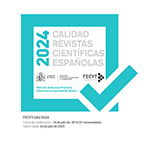Phonological variation that cause communication breakdown among speaking of no-native English. Pedagogic Implications
Abstract
At present, English is being used as a second language in interactions among English native speakers and non-native speakers from different nationalities. The spread of English often creates special challenges related to mutual intelligibility of non-native speakers whose first languages are different. The purpose of this paper is two-fold: (i) to identify elements of speech that contribute to unintelligibility between non-native speakers of different L1s, and (ii) to analyze the impact that an activity on English as an international language (EIL) had on 21 pre-service students –whose L1 was Spanish- attending a pronunciation course at Universidad Nacional de Mar del Plata, Argentina. The speech data for this study were collected from 14 international students studying at Concordia University, Montreal, Canada. The students, who came from various backgrounds were paired with a different-L1 partner and recorded in a dyadic interaction task. Each pair of students then participated in a stimulated recall task, listening to their recording and identifying instances of communication breakdown. These recordings were transcribed and analyzed by the 21 student teachers. Then, using the Lingua Franca Core as an analytical framework (Jenkins, 2000), they identified cases of communication breakdown for possible sources of unintelligibility. Results revealed that non-native production of some segments, especially when they are combined with misplacement of nuclear stress, were the greatest source of unintelligibility between different- L1 speakers. Most listeners acknowledged having gained some awareness of the importance of EIL for their own language development. Some pedagogical implications for the teaching of EIL were discussed.Downloads
Article download
License
In order to support the global exchange of knowledge, the journal Didáctica. Lengua y Literatura is allowing unrestricted access to its content as from its publication in this electronic edition, and as such it is an open-access journal. The originals published in this journal are the property of the Complutense University of Madrid and any reproduction thereof in full or in part must cite the source. All content is distributed under a Creative Commons Attribution 4.0 use and distribution licence (CC BY 4.0). This circumstance must be expressly stated in these terms where necessary. You can view the summary and the complete legal text of the licence.










